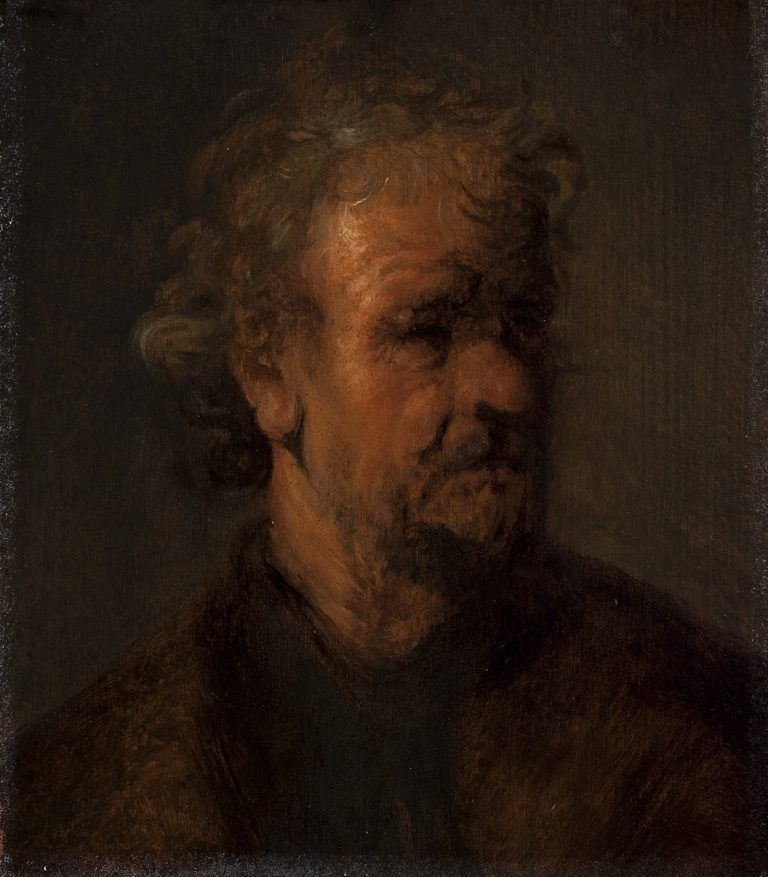This small panel depicts the bust of an old man with a beard. His torso faces the viewer but his head turns to the right, so that his face appears in three-quarter view. The light falling from the left accentuates the left cheek and ear, while the right side of his face and the eyes fall nearly completely in shadow. The man’s curly hair is tousled and his short beard is unkempt. Particularly noticeable is his large, round nose, which gives the man a “rough” aspect, indicating that he comes from a low social background. The feature of the knollnase (bulbous nose) has been clarified by Wayne Franits in light of contemporary physiognomic theories. Especially popular were the so-called neusboeken (nose books) that illustrated various nasal forms accompanied by satiric commentary. A large, bulbous nose, for example, was associated with the vices of drunkenness and smoking, and was considered suitable for figures from the lower social orders.1 Likewise, the loose brushwork in which this nearly monochromatic brownish image is painted supports this impression: the man’s whole face appears to be painted in rapid strokes of the brush, which emphasize his wrinkles as well as his lack of grooming.
As with other paintings in The Leiden Collection (RR-101, RR-109, RR-120), this tronie is based on a study from life.2 In contrast, for example, to Study of a Woman in a White Cap (RR-101), which should be understood primarily as a study of light, this work presents a specific facial type—a rough figure—that could be used in a larger composition. A total of four versions of this study are known, all likely after a now-lost original by Rembrandt of around 1640.3 The prototype probably remained in Rembrandt’s studio and was copied by assistants and pupils as an exercise, or used as a model for a figure in their own paintings. The same head appears, for example, in Parable of the Hidden Treasure in Budapest, executed by an unknown follower, with still-life details added in a much finer hand, perhaps that of Gerrit Dou (1613–75) (fig 1).4 The farmer in this scene has the same type of face with the strikingly large nose, although he appears in mirror image and is rendered with a smoother handling of paint. The same figural type also appears in The Beheading of John the Baptist in the Rijksmuseum (fig 2). In both cases, Rembrandt’s prototype served as a model for a figure of low social standing—the farmer in the depiction of the parable and the executioner in the Rijksmuseum painting, still holding his sword.
It is not possible to date the present study with any precision, although dendrochronological analysis by Ian Tyers has demonstrated that the tree from which the panel was taken was felled around 1636, which indicates an earliest date of use around 1643.5
